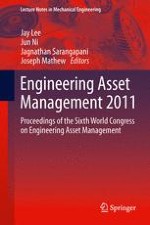This text represents state-of-the-art trends and developments in the emerging field of engineering asset management as presented at the Sixth World Congress on Engineering Asset Management (WCEAM) held in Cincinnati, OH, USA from October 3-5, 2011
The Proceedings of the WCEAM 2011 is an excellent reference for practitioners, researchers and students in the multidisciplinary field of asset management, covering topics such as: Asset condition monitoring and intelligent maintenance; Asset data warehousing, data mining and fusion; Asset performance and level-of-service models; Design and lifecycle integrity of physical assets; Deterioration and preservation models for assets; Education and training in asset management; Engineering standards in asset management; Fault diagnosis and prognostics; Financial analysis methods for physical assets; Human dimensions in integrated asset management; Information quality management; Information systems and knowledge management; Intelligent maintenance; Intelligent sensors and devices; Maintenance strategies in asset management; Optimization decisions in asset management; Prognostics & Health Management; Risk management in asset management; Strategic asset management; and Sustainability in asset management.
